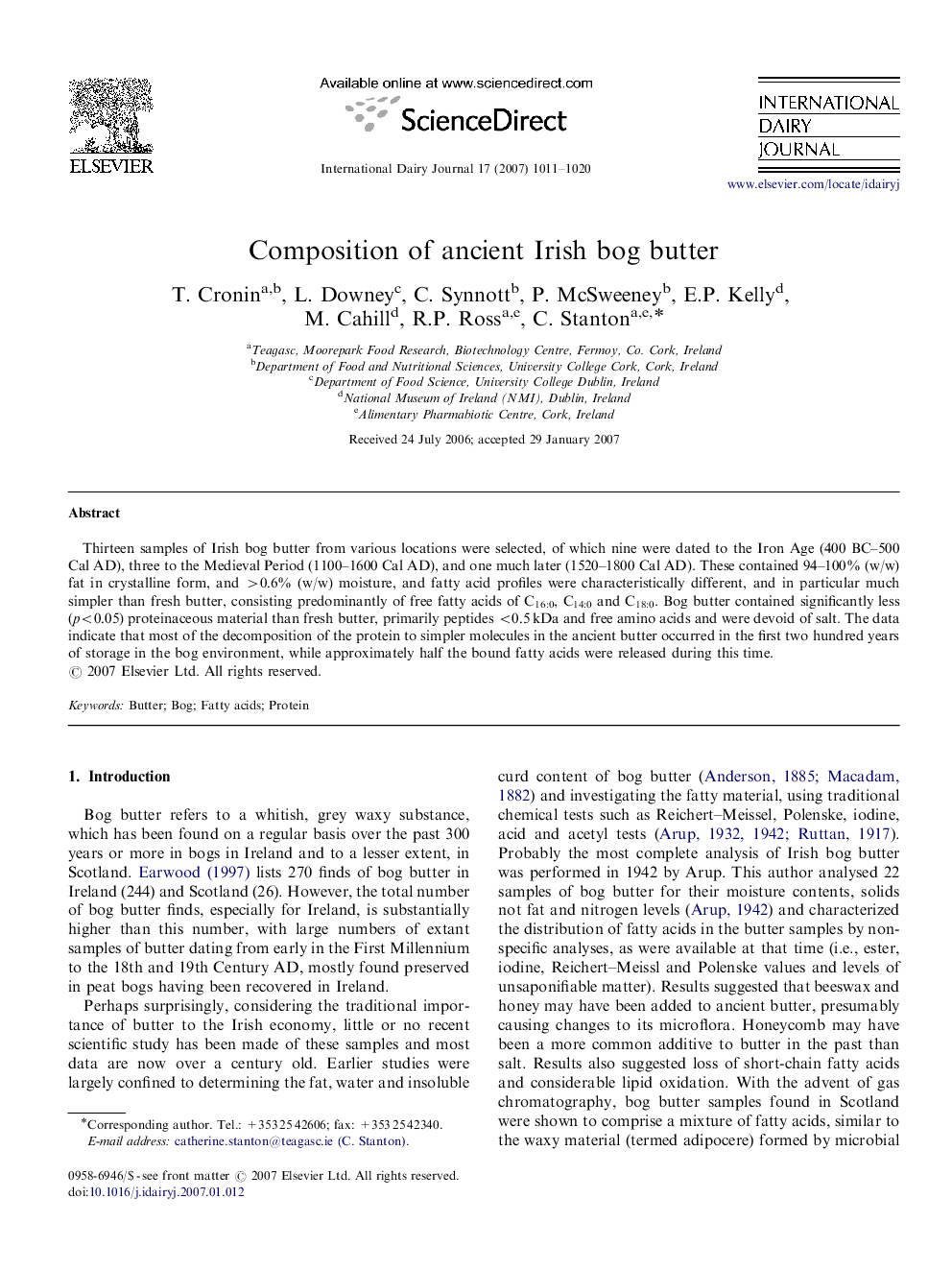| Article ID | Journal | Published Year | Pages | File Type |
|---|---|---|---|---|
| 2435654 | International Dairy Journal | 2007 | 10 Pages |
Thirteen samples of Irish bog butter from various locations were selected, of which nine were dated to the Iron Age (400 BC–500 Cal AD), three to the Medieval Period (1100–1600 Cal AD), and one much later (1520–1800 Cal AD). These contained 94–100% (w/w) fat in crystalline form, and >0.6%>0.6% (w/w) moisture, and fatty acid profiles were characteristically different, and in particular much simpler than fresh butter, consisting predominantly of free fatty acids of C16:0, C14:0 and C18:0. Bog butter contained significantly less (p<0.05p<0.05) proteinaceous material than fresh butter, primarily peptides <0.5kDa and free amino acids and were devoid of salt. The data indicate that most of the decomposition of the protein to simpler molecules in the ancient butter occurred in the first two hundred years of storage in the bog environment, while approximately half the bound fatty acids were released during this time.
